Polonnaruwa is one of the most historically important district in Sri lanka. This was Sri Lankas second capital city after fall of Anuradhapura. Still there are large number of ancient ruins, which belongs to Polonnaruwa kingdom can be found throughout this area. Due to those archeological treasures, Polonnaruwa old city was named as a world heritage site by UNESCO in year 1982. Large number of local and foreign tourists visits this place daily.
Polonnaruwa district is situated in a plain valley of Mahaweli river in North Central Province in Sri Lanka and 216 kilometers away from Colombo and further it is the main city of the district as well. Total land extent of the district is 3337.9 square kilometers. District is located between Northern latitude 7’40” – 8’ 21” and Eastern longitude 80’ 44” – 81’ 20” and elevation is 50-500 meters. District is being bounded to Trincomalee, Batticaloa, Ampara, Matale and Anuradhapura districts.
Annual average temperature of Polonnaruwa district is 28.6c° and it is increasing up to 36.8c° during the month of July and August which is considered as higher temperature period and it decreases down 20.6c° during the month of January and February which is considered as low temperature period. Polonnaruwa district experiences rainfall from North East Monsoon and it is reported from September to January. Annual average rainfall is 119.78mm.
Polonnaruwa is mainly an agriculture based district. You can see cascading paddy fields and well plan irrigation network in this area. Since Polonnaruwa is located in dry zone of Sri Lanka, ancient kings have constructed large number of tanks, which collects rain water for dry season usage. Still those tanks and canal networks provides water supply for the irrigation purposes and human use.
Polonnaruwa
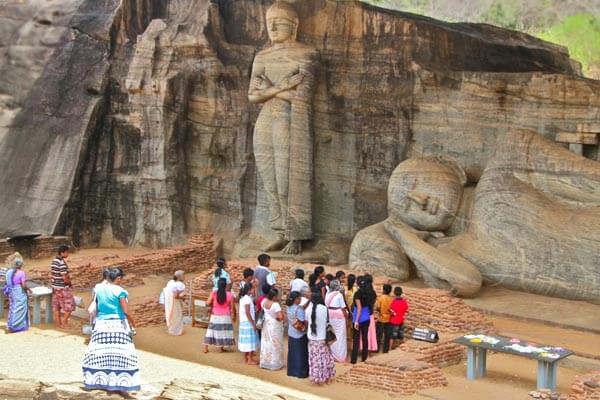
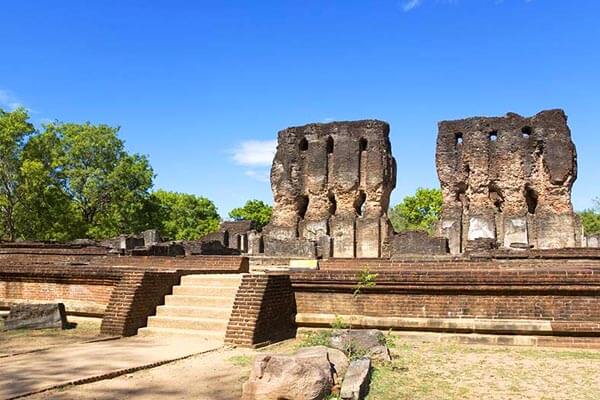
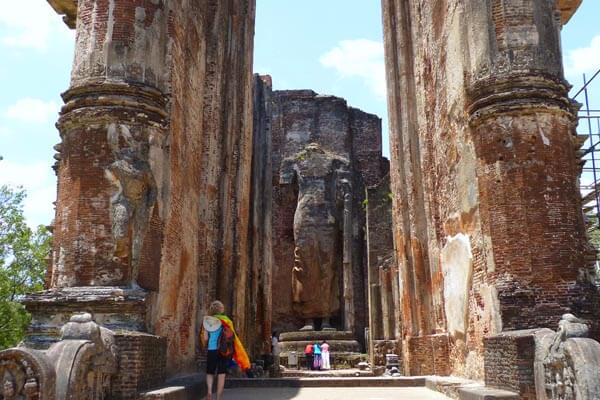
Yet another most famous city in the North Central Province is Polonnaruwa which is the second most ancient of Sri Lanka’s kingdoms and it was first declared the capital city by King Vijayabahu I, who defeated the Chola invaders in 1070 AD to reunite the country once more under a local leader.
Mahavamsa and Chulavansa speak of Pulasthipura; the early historical name of Polonnaruwa; a UNESCO world heritage site, which has a great history of invasions and struggle. Behind it rightfully forms the third element in the Cultural Triangle. Located about 140 kms north east of Kandy, Polonnaruwa offers hours of endless pleasure for history and culture lovers, as there are numerous sights of significance.
Polonnaruwa became the capital of Sri Lanka subsequent to the decline of Anuradhapura and witnessed the Sinhala Buddhist civilization reaching much greater heights. The vast irrigation network with reservoirs that look like inland seas sustained such classic balance in rice cultivation, during the rule of King Parakramabahu the Great (1153-1186 AD) and Sri Lanka came to be known as the Granary of the Orient. The main attractions are the conserved ruins of glorious royal palaces, massive Buddhist temples, and unbroken monuments in colossal statues carved from solid rock boulders and with its conserved ruins and renovated ancient irrigation reservoirs it is a “must visit” destination in Sri Lanka.
As much as the conserved cultural monuments would enlighten the tourists, the wildlife sanctuaries in the district of Polonnaruwa afford ample opportunities for the joy and fun in the close range of wild elephants, other mammals to the lovers of wildlife. At the city of Polonnaruwa the largest ancient irrigation reservoir called Parakrama Samudra (Sea of Parakrama) is always lovely with the excess of birdlife, it is seldom that there is not something interesting going on upon its shimmering expanses of waters. Polonaruwa is located in between wildlife at Minneriya National Park, Wasgamuwa National Park, Kaudulla National Park and Eco Hotels at Kandalama and Habarana.
The places of interest are: Lankatilaka Temple, Thuparamaya, Sandakada Pahana at Polonnaruwa, statues at Gal Viharaya, Medirigiriya Vatadage, Pothgul Vehera, Nissanka Latha Mandapaya, the statue of Pulasthi, palace of the King Parakramabhahu, and many more.
Activities : Archaeology, Architecture, Historicity, Photography, Worship
Minneriya National Park
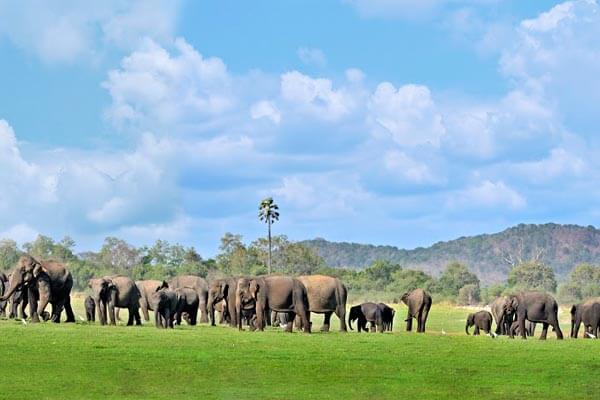
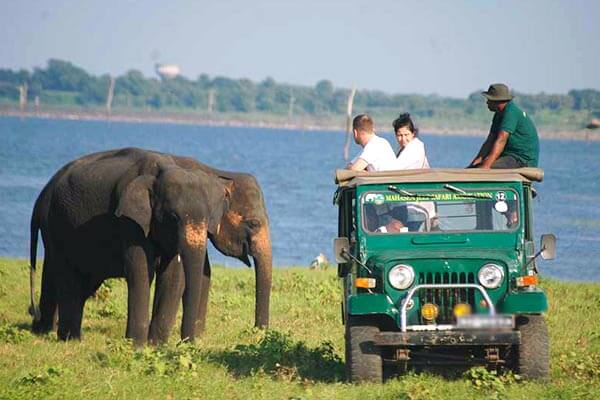
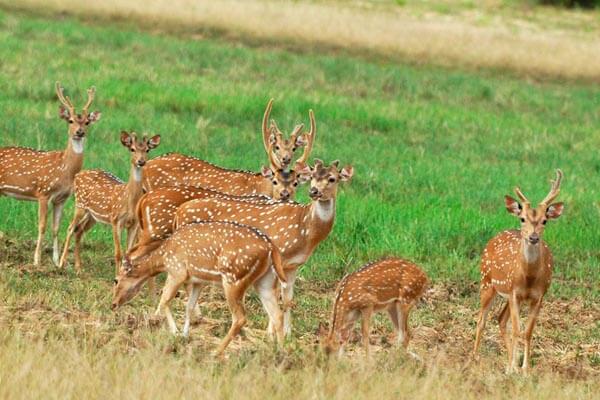
Along with the Kaudulla National Park towards the north and Wasgomuwa National Park in the south, Minneriya forms part of the elephant corridor that connects the protected areas located within the Cultural Triangle and facilitates elephant migration. The large Minneriya Wewa, which is the focal point of the park, was built by King Mahasena in the 4th century and covers an area of 30 sq km between the months of August and October, at the height of the dry season, elephants congregate at the tank. Their numbers peak during Septembers; as many as 300 elephants have been recorded here at this time. This annual event is popularly known as the “the Gathering” when the pachyderms come to park for water and fresh shoots of grass that grow on the lake bed as the waters recede, as well as to look for mates.
Minneriya boasts a wide variety of habitats, ranging from wetland to tropical forest, and aquatic and forest birds can both be sighted here. There are also macaques, sambar deer, wild buffaloes, land monitors, and even some elusive leopard and sloth bears to be observed.
Visitors should note that at the time of the Gathering the park can get very busy and some concerns have been raised about the number of tourist jeeps and their effect on elephant movement.
Activities : Wildlife, Jeep Safari, Photography, Sightseeing
Kaudulla National Park
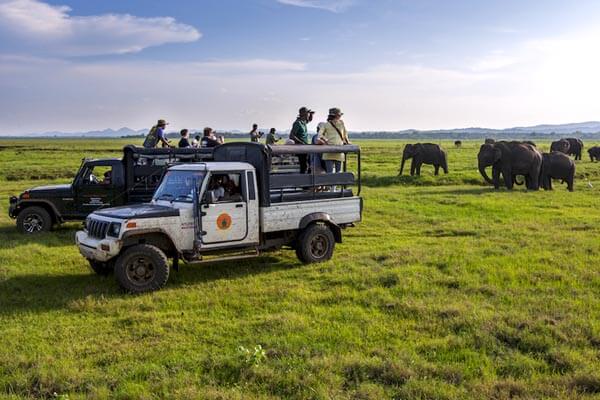
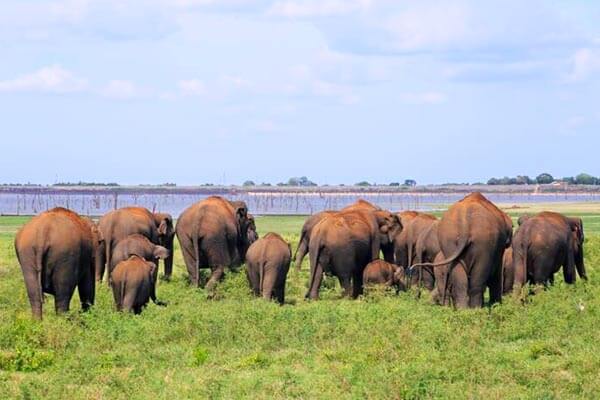
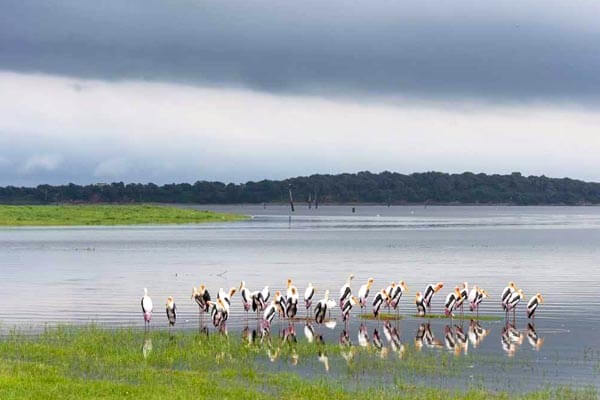
Established in 2002, Kaudulla is also part of the elephant corridor. Like Minneriya, it has a tank as its centerpiece, which attracts a large numbers of elephants during the dry season. The park has a varied habitat and supports wildlife that is very similar to Minneriya’s; however, rusty spotted cats are also found here. Outside the dry season, much of the park is underwater, and the elephants migrate to the surrounding jungles. The park is home to a wide variety of birds species, which include spot-billed pelicans, lesser adjutant and cormorants. Boat rides on the lake can also be arranged. When on a safari, be aware that jeeps do not get too close to the animals. It is always best to maintain a safe distance from elephants, as they may charge.
Activities : Wildlife, Jeep Safari, Photography, Sightseeing
Dimbulagala Raja Maha Vihara
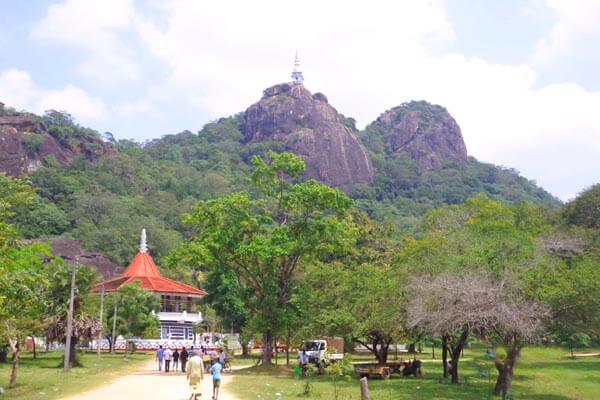
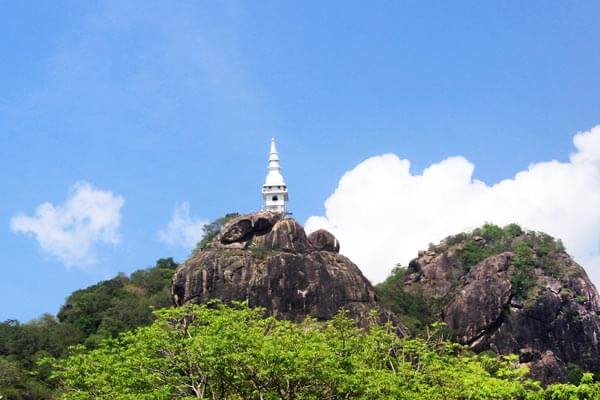
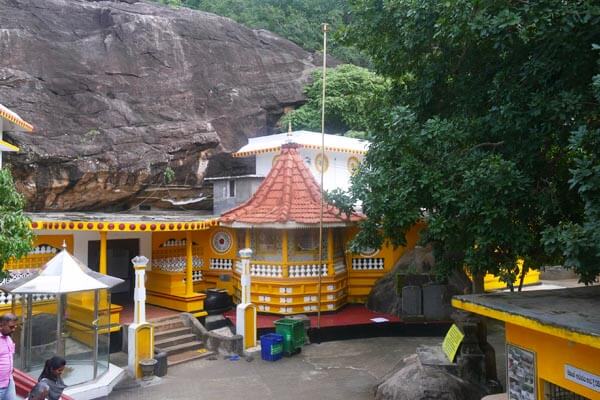
Dimbulagala Raja Maha Vihara is situated 16 kilometres south east of the ancient city of Polonnaruwa, Sri Lanka. The Dimbulagala range houses a number of caves cut into the rock with Brahmi inscriptions over their drip ledges. This forest hermitage of medieval times and holy abode since time immemorial, home to some of the most valued fragments of early frescoes was called the Gunners Quoin by the British. This Buddhist monastery which was abandoned after the times of the Kingdom of Polonnaruwa was restored to the present status in the 1950s due to the efforts of Kithalagama Sri Seelalankara Thera, who was the chief incumbent of the Vihara until his death in 1995.
Activities : Archaeology, Historicity, Photography, Worship
Poḷonnaruwa is the main town of Polonnaruwa District in North Central Province, Sri Lanka. Kaduruwela area is the Polonnaruwa New Town and the other part of Polonnaruwa remains as the royal ancient city of the Kingdom of Polonnaruwa.
